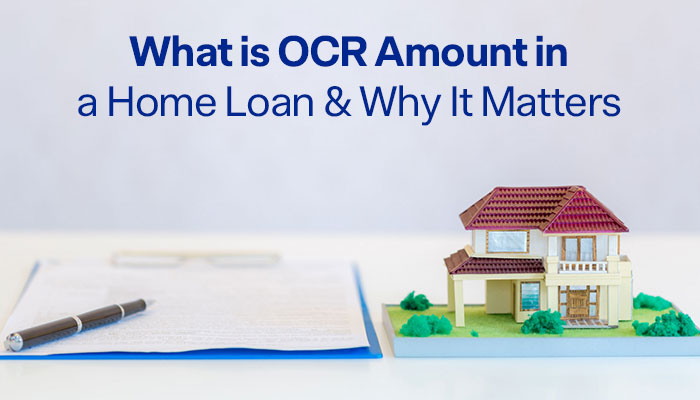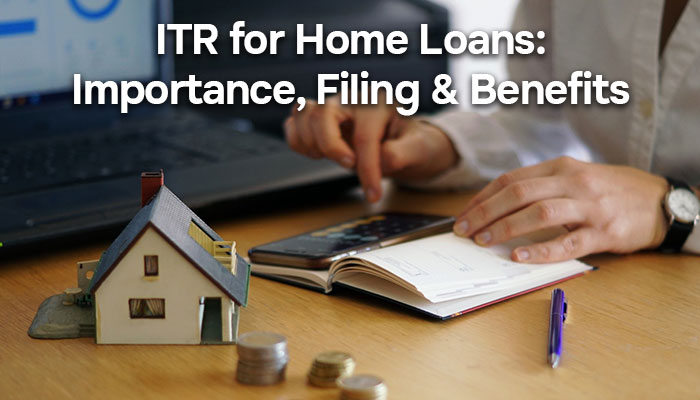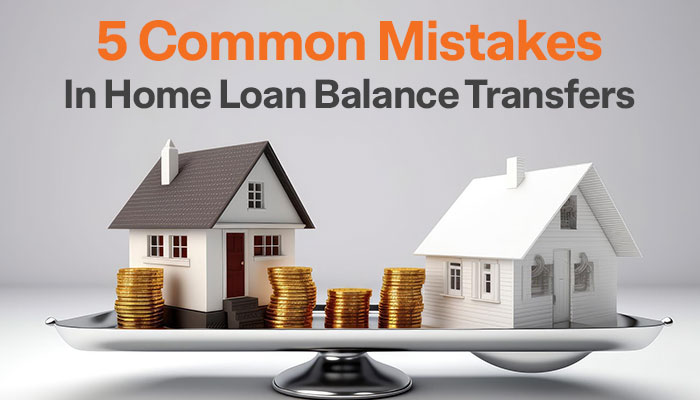Steps To Close A Home Loan Without Complications

Home loan is a liability that comes with the joy of creating a lifetime asset for yourself. You wait years to save money and utilize it for purchasing a house of your dreams. A home loan supports you in fulfilling this dream. However, every individual who takes a home loan always wants to get rid of it as soon as possible, depending on their finances, to own their house fully in their name – a debt-free own house with absolute ownership.
To make this possible, the Reserve Bank of India has allowed borrowers to make any number of prepayments during the life cycle of the loan without any prepayment charges to help Indians close their loans as soon as possible. There are some who continue their loan for the complete tenor availed by them and let the loan close in its natural course. In either of the scenarios, pre-closure or natural closure, you need to take care of a few critical aspects to have hassle-free ownership and future ease of transfer.
This due diligence should start immediately after clearing of your last instalment or making the last payment for foreclosure of the loan. After ensuring clearance of the last loan payment, you need to inform your lender that you want to complete the formalities of closure. Get an appointment to visit your lender and take the below checklist to ensure you don’t miss on any aspect of closure formalities.
1. Loan Closure Proof or a No-Objection Certificate/No-Dues Certificate
Home Loan is a liability and settlement of every liability has a proof. This proof is called loan closure proof or a no-objection certificate or no dues certificate. This document is issued by the financial entity or the bank that lends you money on its letterhead stating that your loan is now closed and there is no liability on this loan against your name. Please ensure that this document contains the below information:
- Your name
- Your loan account number
- Your communication address
- Address of the property mortgaged by you
- Loan amount availed
- Balance outstanding – nil
- Date of loan disbursal
- Date of loan closure
Once the lender has issued the certificate to you, their right to charge monthly instalments (EMIs) from you ceases. They do not have any right to your property as well.
2. Original Property Papers of the Mortgaged Property
When you availed disbursement of the loan, it may have been secured against your property for which you may have handed over original property papers to the financial institution for their safe custody. Against this, the lender would have provided a list of documents (LOD) to you. Take this LOD along with you while visiting the lender for completing closure formalities and match the physical documents with this list.
If you are not able to locate your LOD or you never took the LOD from the lender, you need not worry. The lender will share the LOD with you at the time of returning the documents and every physical document would be matched with it. They will get you to sign an acknowledgement document on one set of LOD as a proof of handing over all documents to you.
Be very careful while checking the documents and ensure your property chain is as submitted by you and no document is missing in the link. Some of the documents that you need to check include:
- Allotment letter
- Payment receipts
- Conveyance deed
- Sale deed
- Lease deed
- Gift deed
- Transfer deed
- Possession letter
Ensure the papers are intact and in good condition, the way they were submitted by you to the lender. Some lenders might club loan closure proof and LOD as a single document and take an acknowledgment on it.
3. Unused Security PDCs
While you got the loan disbursed, the lender must have taken some undated security cheques from you in addition to ECS/ACH for regular repayment. These cheques are used by the lender in case of any default by the borrower on monthly payments. In case you have never defaulted in your repayment tenor, your cheques would be intact with the lender. Don’t forget to collect these cheques and destroy them to avoid any future misuse.
4. Credit Bureau Records to be Updated
Your entire history of loan starting from disbursement to closure is captured with the four different credit bureaus in the country. Ensure the same is updated by the lender within 30 days of loan closure.
Check your all four reports – CIBIL, CRIF, Experian and Equifax after 30-45 days of closure of your loan. In case the records are not updated, you can raise a request with the bureaus and they will connect with the lender to update the reports. Follow up till you get confirmation from the bureau on resolution.
5. Obtain Updated Non-Encumbrance Certificate
Encumbrance Certificate is a legal document containing detailed records of all your financial transactions related to the property mortgaged for home loan. This can be retrieved from the local sub-registrar office.
When you close the loan, this certificate must reflect the full repayment. Procuring this document is proof that the property is free from any legal or monetary liabilities and is handy when you wish to sell the property anytime in future. This document is an important document in some parts of the country while in some other parts it’s not a critical document.
6. Lien Release in Case of Registered Mortgage
Normally, a home loan is categorized as an equitable mortgage in which no lien marking is done at the sub-registrar office. However, there are situations when the lender would be creating a registered mortgage on the property. This might happen when the lender is unsure about the repayment capacity of the borrower or there seems to be some abnormality in the legal transaction of the property. Lien marking gives an edge of recovery to the lender in case of default.
If a registered mortgage/lien marking is done on the property, you must ensure getting the same cleared from the sub-registrar office as soon as you repay the loan. Non removal of the charge would create complications for you in the future with regard to property ownership. The charge was removed and the release deed executed at the sub-registrar office. For this an authorized official from your financial Institution will accompany you to the registrar office.
7. Loan Repayment Track
Obtain a track of repayment from the lender and ensure your all bulk payments are also reflected in it. Try to keep a photocopy of the bank statements from where the repayment is done. This might be handy in case of any dispute with the lender or any government department or the credit bureau.
8. Legal Clearance from Your Lawyer
It’s not a bad idea to get a legal clearance certificate from a lawyer of repute. Though not mandatory but can be helpful in future while selling the house.
Tags
Disclaimer: The information contained in this post is for general information purposes only. IIFL Home Finance Limited (including its associates and affiliates) ("the Company") assumes no liability or responsibility for any errors or omissions in the contents of this post and under no circumstances shall the Company be liable for any damage, loss, injury or disappointment, etc. suffered by any reader. All information in this post is provided "as is", with no guarantee of completeness, accuracy, timeliness, or of the results, etc. obtained from the use of this information, and without warranty of any kind, express or implied, including, but not limited to warranties of performance, merchantability, and fitness for a particular purpose. Given the changing nature of laws, rules, and regulations, there may be delays, omissions, or inaccuracies in the information contained in this post. The information on this post is provided with the understanding that the Company is not herein engaged in rendering legal, accounting, tax, or other professional advice and services. As such, it should not be used as a substitute for consultation with professional accounting, tax, legal or other competent advisers. This post may contain views and opinions which are those of the authors and do not necessarily reflect the official policy or position of any other agency or organization. This post may also contain links to external websites that are not provided or maintained by or in any way affiliated with the Company and the Company does not guarantee the accuracy, relevance, timeliness, or completeness of any information on these external websites. Any/ all (Home/ Loan Against Property/ Secured Business Loan/ Balance Transfer/ Home Improvement Loan/ NRI Home Loan/ Home Loan for Uniformed Services) loan product specifications and information that may be stated in this post are subject to change from time to time, readers are advised to reach out to the Company for current specifications of the said (Home/ Loan Against Property/ Secured Business Loan/ Balance Transfer/ Home Improvement Loan/ NRI Home Loan/ Home Loan for Uniformed Services) loan.
 Login
Login






















